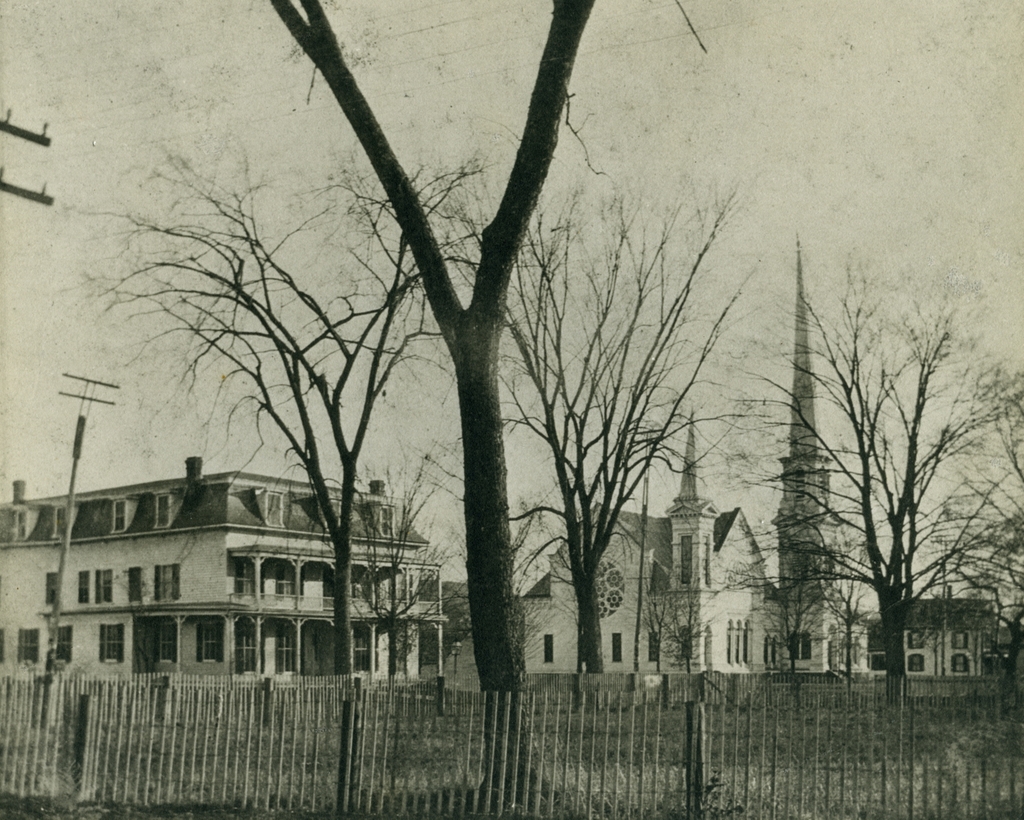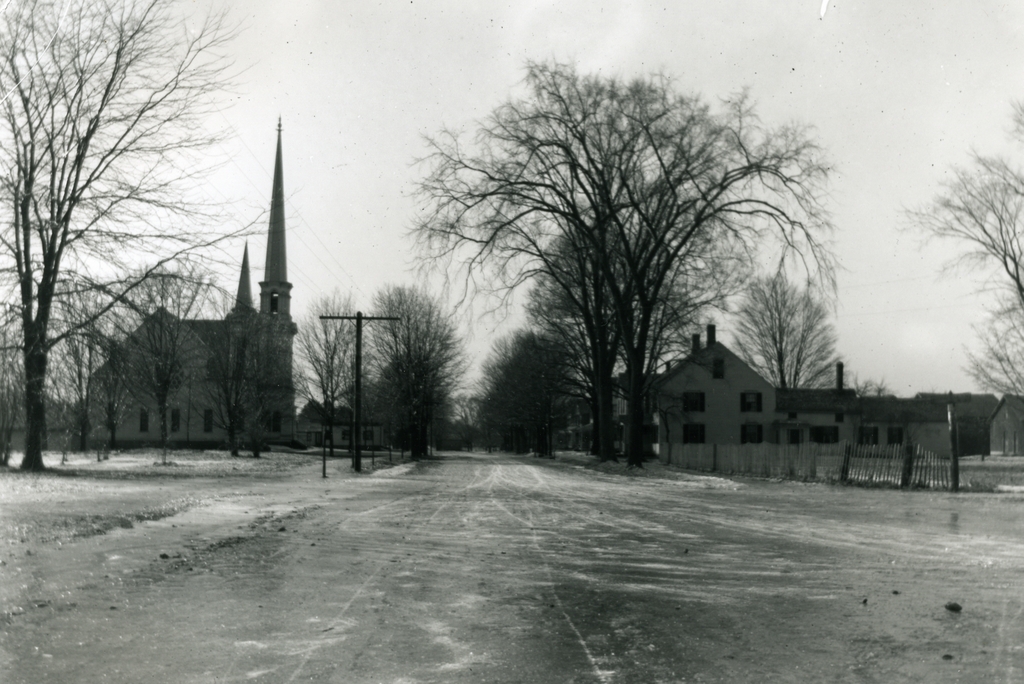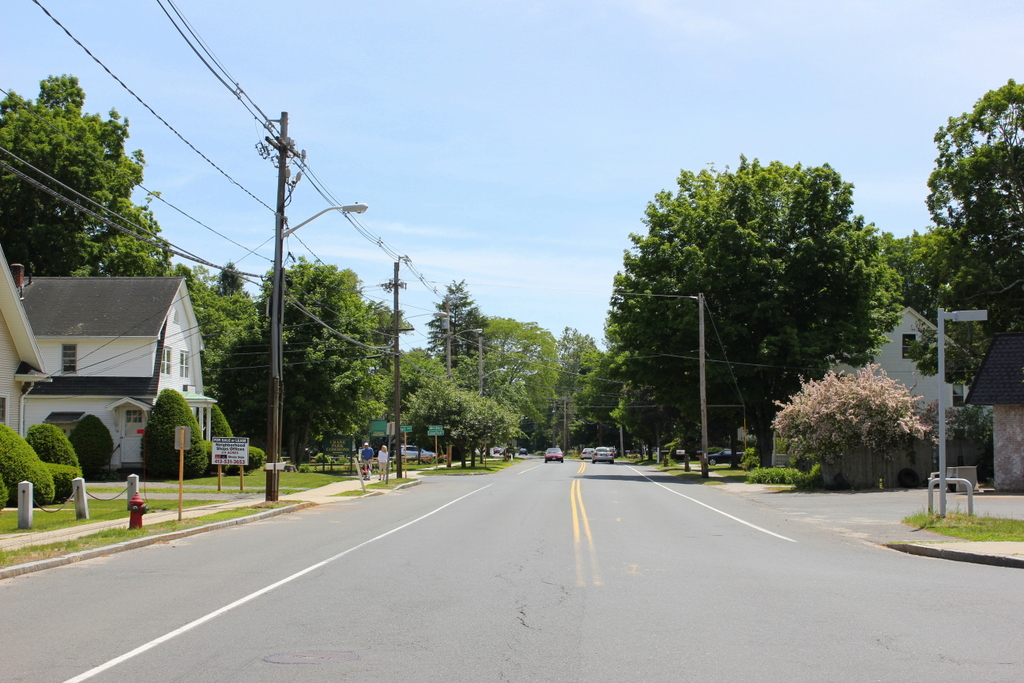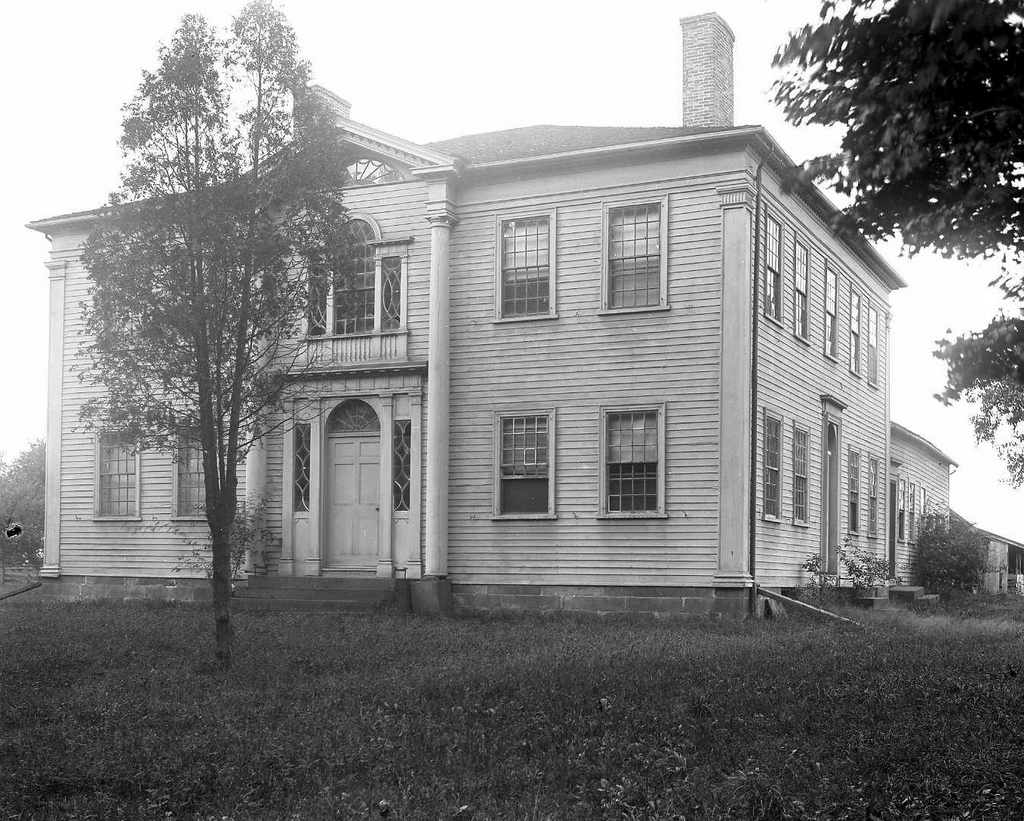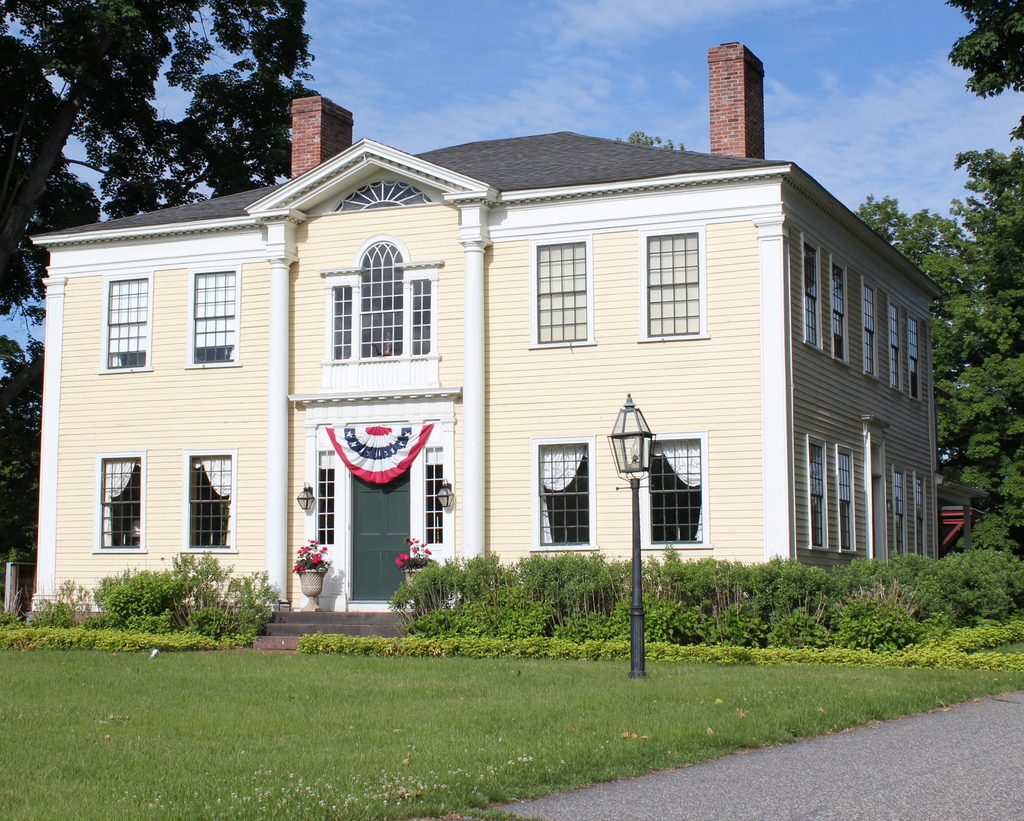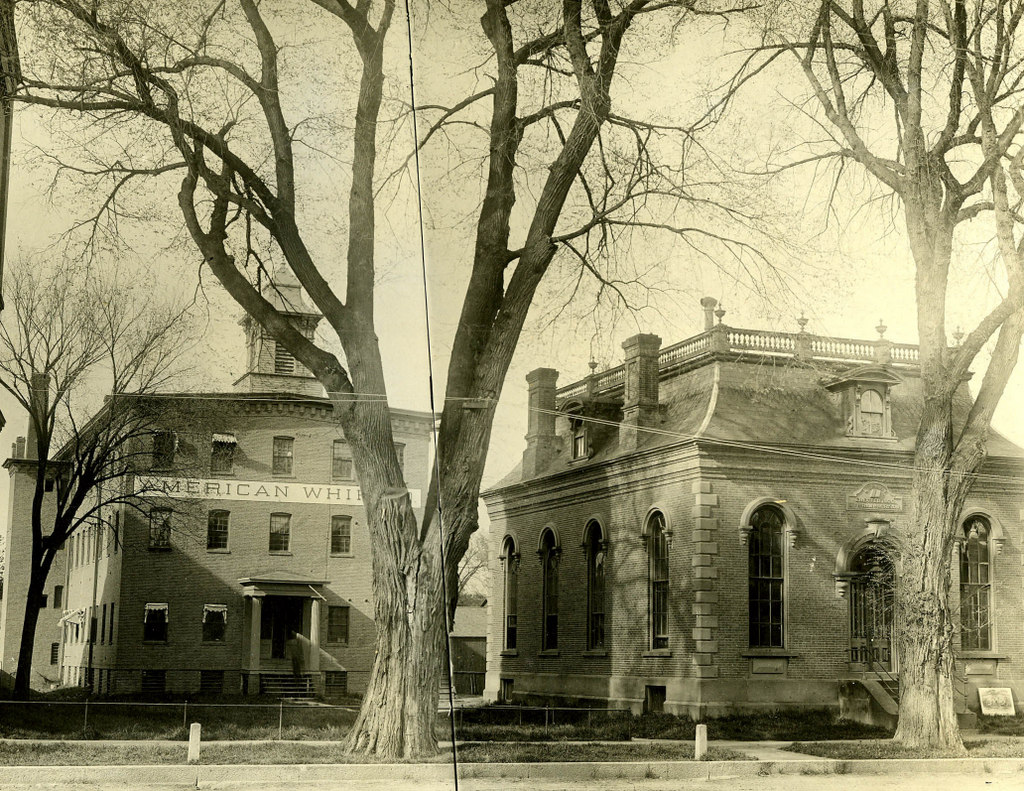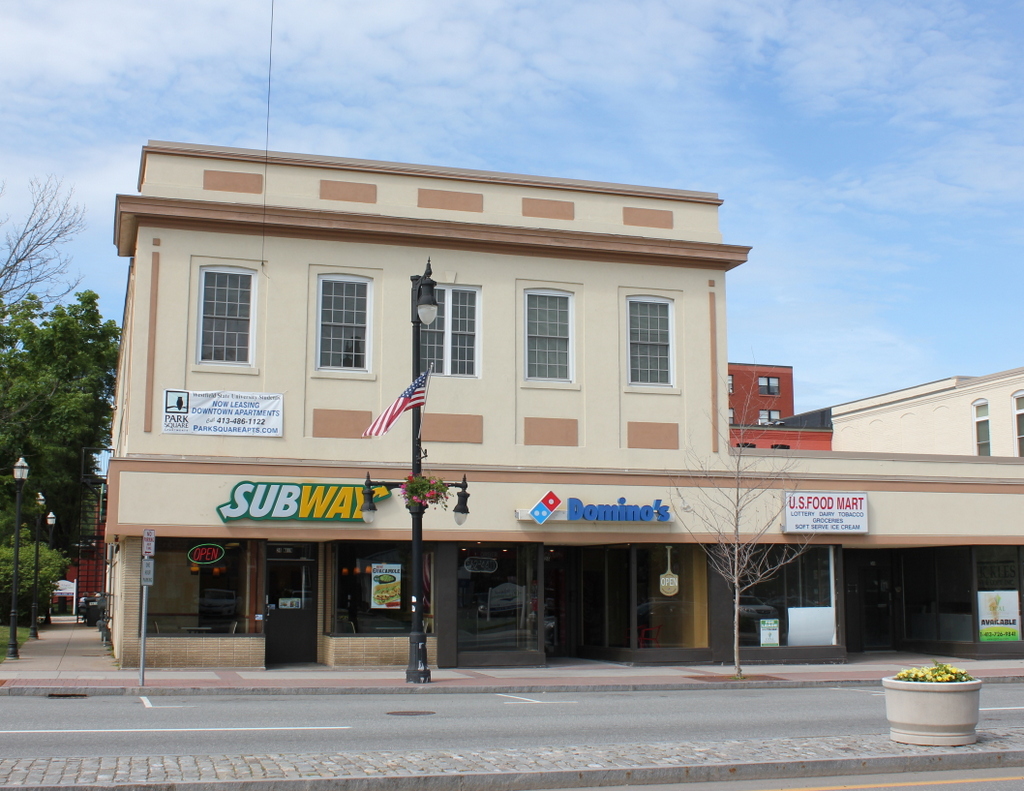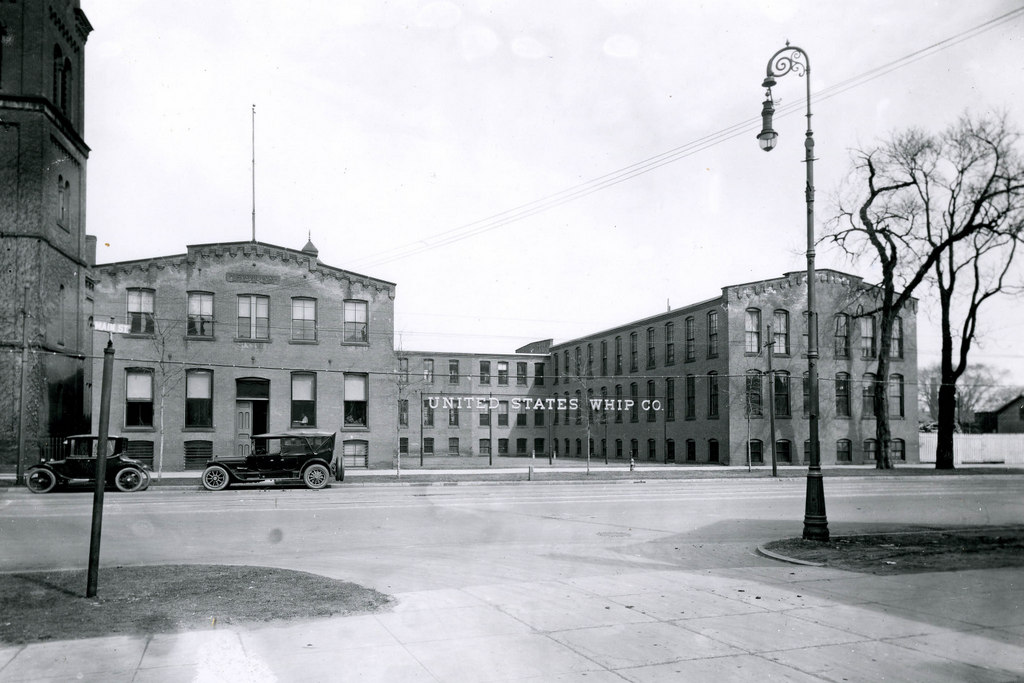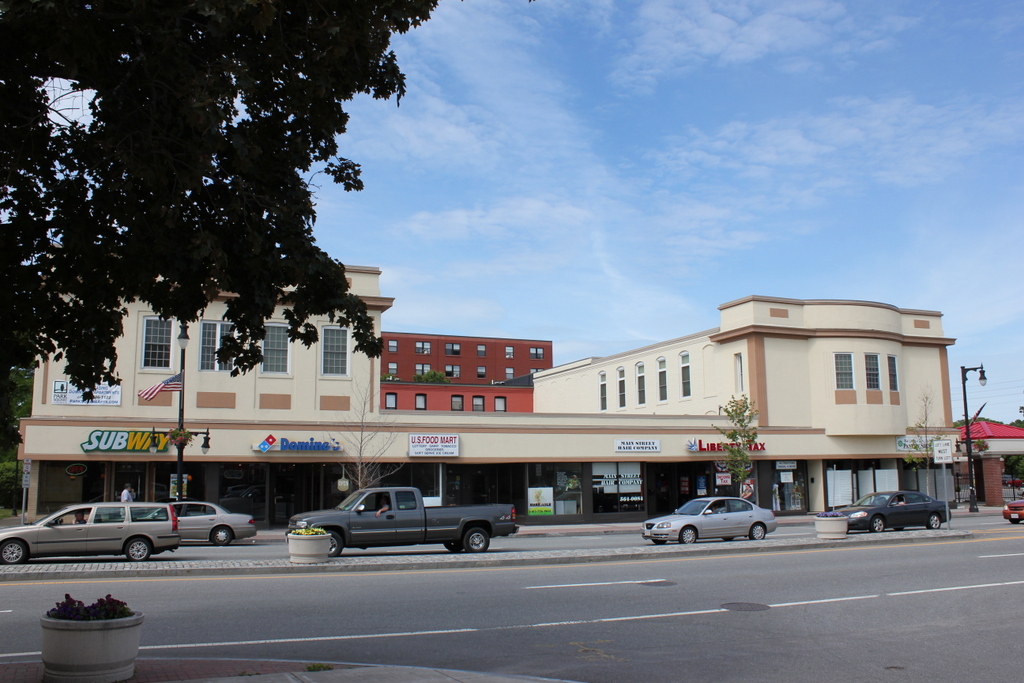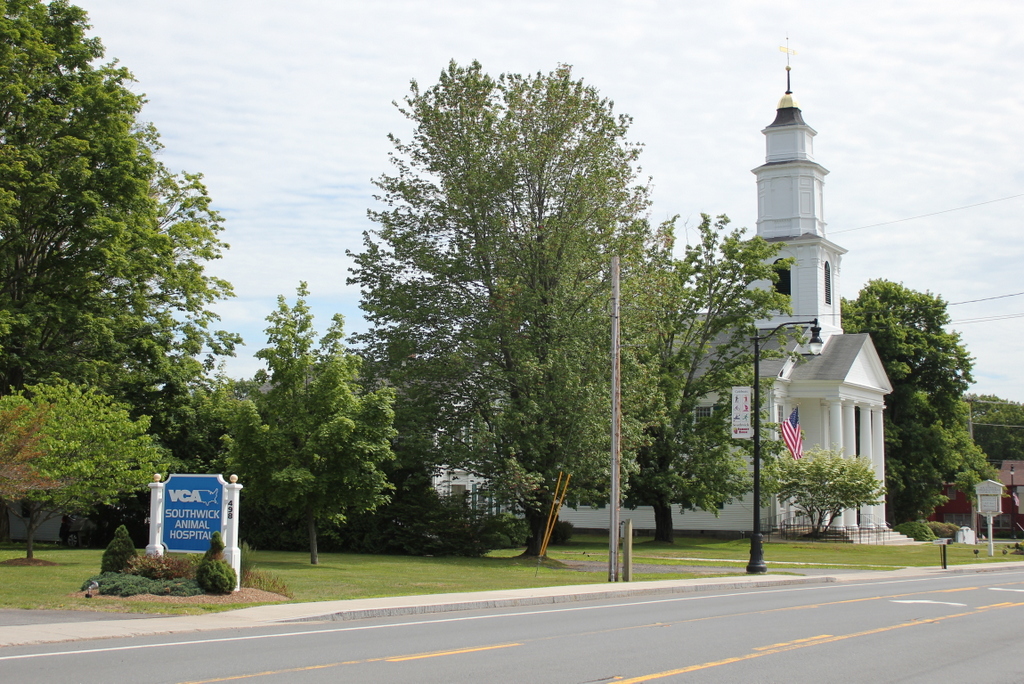The Allis House and the First Church on Main Street, seen from the intersection of Main and Springfield Streets, sometime around the 1880s or 1890s. Image courtesy of the Wilbraham Public Library.
The scene in 2015:

This location on Main Street in the center of Wilbraham was the location of a series of fires between 1877 and 1911. In 1877, both the first and second meeting houses were destroyed in a fire, after which the Allis House hotel and the third meeting house were built, as seen in the first photo. However, less than 20 years later the Allis House also burned, in a rather suspicious fire that conveniently occurred after business started declining in the 1890s. The church survived the Allis House fire, but it burned in 1911 after being struck by lightning. Today, the location of the church is part of Gazebo Park, at the corner of Main Street and Burt Lane.

